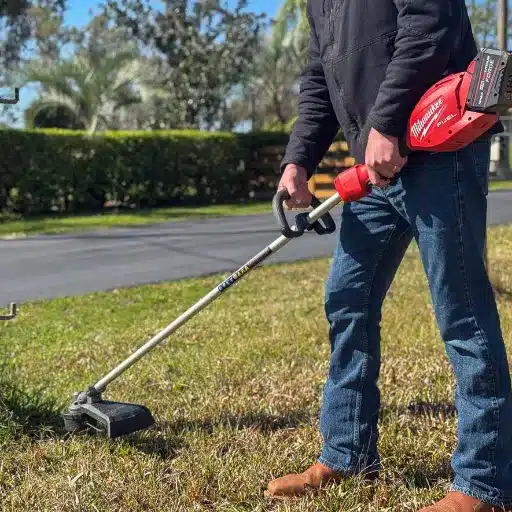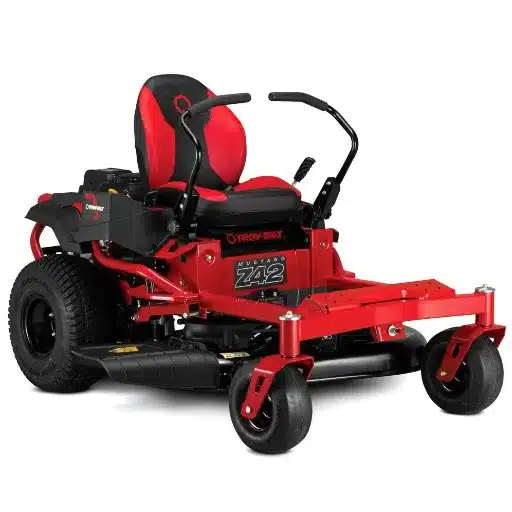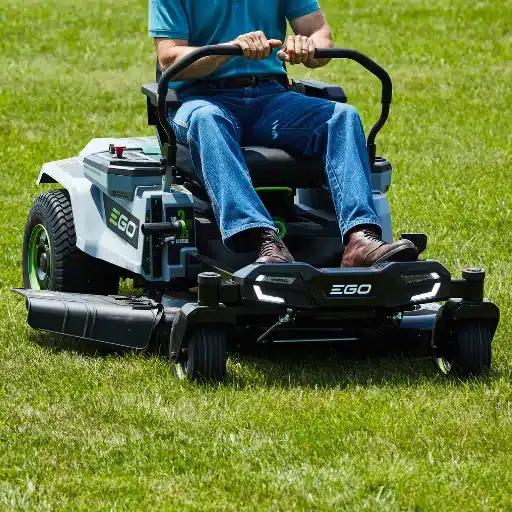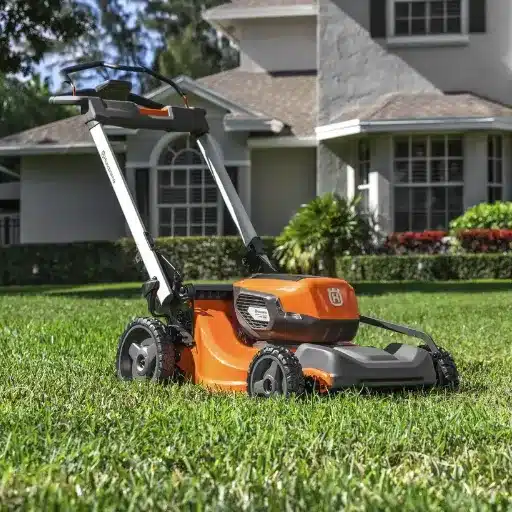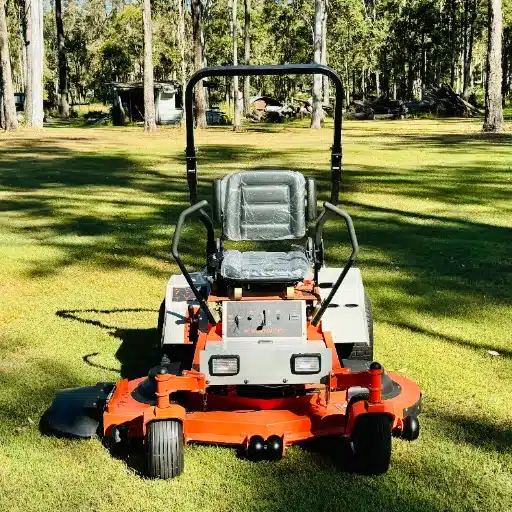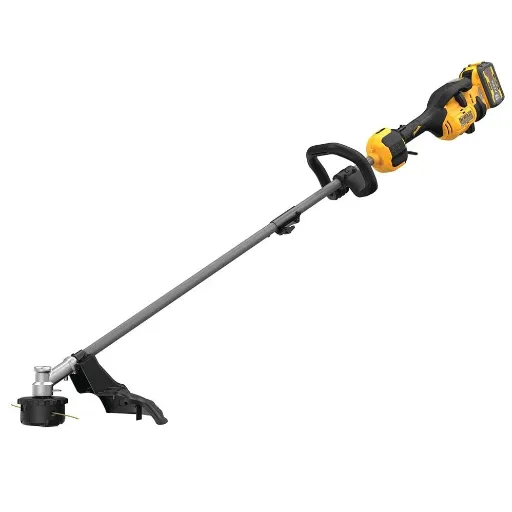Taking care of a perfectly trimmed lawn can take much time and toil. These robot mowers became the game-changers in lawn care technology. With convenience being offered to us at a whole new level, added efficiency, and improved precision, these smart devices have revolutionized how we do yard work. Yet, in 2025, if more advanced models come on the market, choosing a robot lawn mower will feel overwhelming. This is where the guide will help you. Whether you want a future-ready feature, long-lasting performance, or something inexpensive, this guide covers them all. Together, we will look into the essential things to consider, discuss the best picks on the market, and get you one robotic helper that will completely change your life in lawn care.
How Does a Robot Lawn Mower Work?
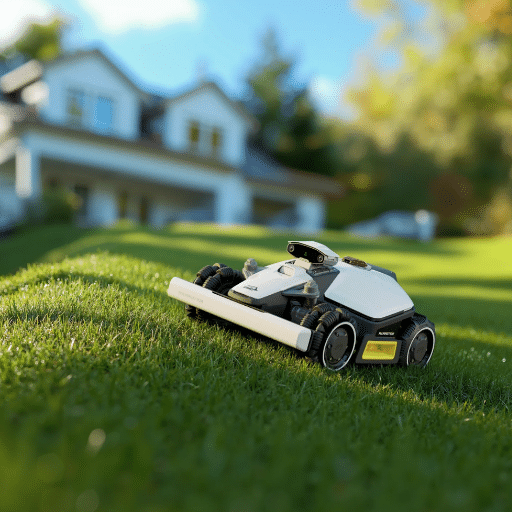
Robot lawn mowers autonomously cut your grass between sensors, rechargeable batteries, and a pre-programmed boundary. Once you have it set, the mower will move around the designated area of the lawn, briskly cutting grass to a chosen height. The sensors help avoid obstacles so the lawnmower never collides with anything as it makes its way around our yard. Many models will return to the docking station for charging when their battery runs low and then resume mowing when ready. It is thus a convenient and satisfactory hands-free solution for maintaining the pristine lawn.
What technology powers a robotic mower?
Robotic mowers are powered by various technologies, ensuring high efficiency, precision, and safety. At the heart of these machines is a battery-powered electric motor, usually powered by lithium-ion batteries, which are celebrated for being long-lasting, quick to charge, and earth-friendly. The mower enters its working environment through boundary wire systems, GPS-based mappings, or sometimes both.
Mowers are sometimes required to identify their work area within the boundary wire and sometimes beyond it.
For optimal safety and operations, sensors such as those for obstacle detection and lift or tilt are given primary importance: the obstacle detection sensors allow the mower to detect objects blocking its way to avoid the same, whereas the lift and tilt sensors disable the blade immediately when the device is raised, thereby saving children and pets from severe injuries. Some higher-end models allow AI and machine learning so that mowers adapt to different lawn configurations and optimize their mowing patterns over time.
Furthermore, Bluetooth, Wi-Fi, and cellular networks enable users to control these robotic mowers remotely using smartphone apps. Such apps empower users to set schedules, track the mower’s movements, and receive real-time notifications. Some models also perform weather-based operations, wherein the mower may delay operations during heavy rains, which would impair performance.
According to industry experts, the worldwide robotic lawn mower market is expected to grow significantly and reach beyond $2 billion by 2025, driven by automation and smart home technology developments. With sensors, connectivity, and AI, robotic mowers continue to innovate and provide homeowners with a futuristic way to maintain lawns effortlessly.
How do sensors improve navigation?
Sensors, among them, provide crucial assistance in improving the navigation capabilities of robotic lawn mowers. They are equipped with ultrasonic, infrared, and gyroscopic sensors that can detect obstacles, delineate boundaries, and guide applications with greater precision toward an optimal path. Ultrasonic sensors, for example, emit extremely high-frequency sound waves to detect object proximity so that the hostile environment prevents collision and smoothly adjusts the path accordingly. Infrared sensors help detect land changes or obstacles to maintain efficient operation on uneven or rough terrains.
Modern gyroscopic sensors support flattening and directional heading-keeping, enabling the lawn mower to manoeuvre accurately without terribly losing track. Studies have demonstrated that sensor-mediated navigation systems in cutting-edge robotic mowers can be as efficient as 30 percent in avoiding redundant passes and covering the grounds. This improvement fully contributes to smarter lawn upkeep, conserving power, and reducing operation time.
What is the role of a perimeter wire?
The perimeter wire is crucial in guiding and confining robotic lawn mowers within a predetermined area. Typically, the wire runs along the edge of a lawn, pumping out a very low magnetic field that the lawn mower’s sensors pick up. This lawn mower follows an invisible signal and, in doing so, recognizes where it operates and avoids trespassing on flower beds, driveways, or neighboring properties.
The new perimeter wire systems increase the safety and efficiency of the process. The systems ensure the mower does not kill a delicate plant or cross into the driveway alone. Advanced robotic mowers with intelligent perimeter wire guidance systems have been proven to cover 98% of pre-defined areas, offering pinpoint exactness and thorough lawn care. This wise choice of perimeter wire decreases energy consumption, as the mower does not need to waste time re-routing or working on heavy overlapping. This saves power and reduces the lawn maintenance time, hence the importance of perimeter wire systems in truly effective robotic lawn mowing solutions.
What Are the Advantages of Using a Robot Mower?
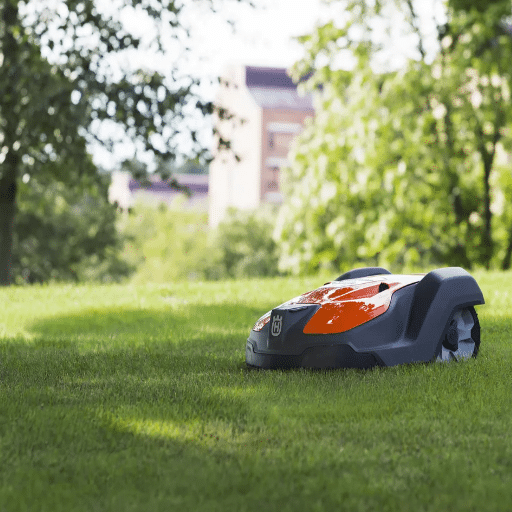
Robot movers offer several benefits that make lawn care more efficient and convenient. Operating autonomously, they save homeowners’ time and energy. These mowers also cut consistently and precisely, thereby maintaining a well-groomed lawn all the time. Their use of the least electricity and zero direct emissions makes them highly ecological. Furthermore, they make enough noise to be used at any hour without bothering the neighbors. These mowers have advanced sensors and navigation systems for obstacle detection, working safely, increasing reliability, and user convenience.
How does it compare to a traditional mower?
Significant differences exist between robot and traditional mowers when considering functionality, convenience, and environmental impact. Traditional mowers, especially gasoline-powered ones, are noisier and tend to harm the environment by releasing carbon dioxide and other air pollutants. An average gas mower can pollute one hour’s worth of air, comparable to what a car would pollute while driving for more than 200 miles. In contrast, robot mowers run mostly on rechargeable batteries and thus produce no end emissions, besides being comparatively quieter.
Maintenance-wise, robot mowers require comparatively less attention than traditional ones, which call for regular oil changes, blade sharpening, and sometimes fuel refills. Robot mowers entirely automate lawn care, frequently maintaining their grass cut and promoting healthier lawns by keeping grass even taller. In contrast, traditional mowers must be operated manually with irregular mowing intervals, delivering poorer results.
Cost-wise, robot mowers come with a hefty starting price, anywhere from $600 to more than $2,000-but, but they offset this with lower running costs thanks to their energy-efficient features, not polluting a gram. Meanwhile, cheaper to start with, the traditional gas or electric mowers will gladly soak you for more tricks down the line: maintenance, fuel, or electricity bills. In essence, robot mowers amalgamate cutting-edge technology and an eco-friendly concept, thus providing a progressive fundraising model for lawn maintenance.
Is a robot mower more efficient in lawn maintenance?
Robot mowers have different problems in lawn maintenance to maintain efficiency. They operate alone with GPS or boundary wire systems, providing guaranteed cutting. Robot mowers use mulching blades instead of traditional blades. These blades finely chopped the grass and returned it as natural fertilizer to the lawn, thus improving the health and greenness of the lawn over time.
The robot mowers are highly favored for energy efficiency. Research pointed out that robot mowers mostly consumed less energy than what was given off by gasoline combustion in a gas-powered mower, thereby making a smaller ecofootprint. The consumption of robot mowers was approximately 3-10 kWh per month. At the same time, in the U.S., the traditional mowers would consume an average of several hundred gallons of gasoline annually. It also saves a lot of time for the users as they can set robot mowers on a schedule to work for them without any supervision, even during rain (depending on the model).
In terms of maintenance, robot mowers are undoubtedly the preferred option. They generally have fewer parts moving together than gas-powered or electric mowers, which lessens their chance of breaking down and requiring repairs. The robot mower’s upfront cost does exist, ranging from $600 to $2,000+; however, most of those expenses are offset with fuel, maintenance, and time savings on the back end.
In essence, robot mowers provide the most accurate, sustainable, and convenient alternative for lawn maintenance. This is the future way to maintain a lawn for an eco-conscious homeowner or someone who is never willing to fuss and hassle.
How does it handle larger lawns and smaller lawns?
The robot mower design will accommodate bigger and smaller lawn types, although this depends on the model. Mower-sized ones for smaller lawn areas, dating from around 0.25 to 0.5 acres, do an excellent job. They are designed to meet the needs of smaller regions and complex layouts. They are equipped with a high-specification navigation system that enables them to steer around obstacles and through tight spaces easily.
The premium models for bigger lawns are supplied with large power batteries, wider cutting widths, and better mapping technologies, allowing them to mow areas as large as 1.25 acres and beyond. Their guitars can last longer due to dual or large-capacity batteries. Some systems can smartly zone the lawn into different sections for workload distribution. Also, many advanced models can operate on slopes from 35% to 40%, enabling more versatile mowing on uneven terrain.
Based on recent specifications from the top brands, battery-powered robot mowers consume around 1 to 3 kilowatt-hours per month, thus presenting a very energy-efficient option even for big lawn-care requirements. By selecting the most suitable model for size and complexity, one can always have the best performance from the robot mower and consistent grass health, regardless of the yard size involved.
Which Robotic Lawn Mower Is Right for You?

Selecting the right robotic lawn mower is dictated by the size of your lawn, its shape, and the other particulars it requires. The compact ones with a reasonably straightforward navigation system will suffice for those with small to medium spaces. For those with larger or more complex plots, the longer options may fare better, along with better mapping and slope-handling ability. Make sure the mower can work for your lawn terrain and features, like narrow passages or obstacles. Such features as weather sensors, app control, and security options may make life easier and give you peace of mind. Always go with a mower from a known manufacturer with a solid reputation built on customer reviews and dependable support.
What features should I look for in a robotic mower in 2025?
With robotic mowers in 2025, more enhanced and modernized features are now adopted to ensure efficiency, convenience, and precision. Go for the model using AI-enabled mapping systems for smarter navigation and lawn care customization. These systems can assess grass growth patterns, soil conditions, and weather forecasts from the ground to automatically adjust mowing schedules. On the flip side, many robotic mowers are now created with GPS-assisted guidance for pinpoint accuracy even in complex layouts or bigger lawns.
Another critical trait to look for is the battery. Choose those with new-generation lithium-ion batteries that include long runtime and fast charging. Top-tier models, for instance, give you a supporting charge for 6 hours, more than enough for use in large areas without too many interruptions. Solar-assisted charging systems are beginning to spread, too, and are being taken as the eco-friendly route.
Connectivity-wise, you want mobile app controls and should connect with smart home systems while allowing for real-time monitoring. Nowadays, Many mowers also allow voice controls through Alexa or Google Assistant, making operation less cumbersome. Of course, you also want enhanced security, with geofences, PINs, and even theft tracking to protect your investment.
Lastly, look out for green features like silent modes or energy efficiency. Some models even come with a mulch mode that chops up clippings for natural fertilizer. A line of mowers with these features will ensure a prime solution that saves time while assisting the health of your lawn.
How does the Husqvarna Automower compare to the Worx Landroid?
When comparing the Husqvarna Automower and the Worx Landroid, undoubtedly, the two products represent the cutting edge technically and in terms of efficiency. Still, they slightly pertain to different desires and necessities.
The popularity of Husqvarna Automower is derived from its ability to resist all under pressure and handle large and complex lawns, some sections being up to 1.25 acres. GPS-assisted navigation provides 100 percent coverage efficiently without repeated mowing paths. Its body-type presentation can also take big slopes of up to 45 percent, primarily suitable for uneven landscapes. The cutting system utilizes a razor-sharp blade to shred clippings into fine mulch, which encourages better lawn health and offers excellent quietness, about 58 dB.
In contrast, the Landroid system tends to be more profitable for those with a price-conscious requirement, offering an excellent value, and doing well for small and mid-sized lawns. It is equipped with the patented AIA (Artificial Intelligence Algorithm) technology, enabling it to navigate narrow passages and tight corners easily. While the Landroid typically handles areas up to 0.5 acres, newer models may have optional upgrades, like boundary extension kits and anti-collision sensors with ultrasonic sensors, for added comfort. Fully customizable from the Worx Landroid app, one is encouraged to set mowing schedules, adjust cut height, and receive feedback instantaneously.
One factor distinguishing the two is the approach to connectivity and intelligent features. Both offer mobile app control, but Husqvarna integrates smart home systems for hands-free activity: Alexa and Google Home. Landroid shines in modularity: users may improve their mowers with add-ons such as GPS tracking or Find My Landroid for theft protection.
Where Husqvarna Automower fits bigger and more complex lawns with users looking for premium performance, Landroid excels by providing an intelligent, affordable solution for smaller areas, emphasizing flexibility and ease of use.
What are the benefits of GPS technology and RTK?
GPS technology combined with Real-Time Kinematics (RTK) offers increased accuracy, stability, and efficiency in its fields. While standard GPS is accurate to about 3-5 meters, RTK has a positioning accuracy within 2-3 centimeters, thus being preferred by applications requiring such pinpoint precision.
Agriculture: RTK-enabled GPS systems are changing the curve in precision agriculture, as automated machinery can plant, fertilize, and harvest crops with extreme precision. This leads to the waste of fewer resources, such as seeds and fertilizers, thus enhancing the crop’s existence. Records suggest there is a 20% increase in efficiency through the adoption of RTK systems.
Construction and surveying: In an industry like construction, RTK ensures precise land measurements for site grading, reducing errors. Surveyors spend less time conducting repetitive tasks, and reports show a 25-40% time saving compared to conventional methods.
Autonomous Systems: RTK is the backbone of autonomous vehicles and drones. Its high accuracy ensures safe navigation with thin error margins in complex terrain or environments.
Safety and Disaster Management: GPS and RTK assist disaster management by accurately mapping affected areas and facilitating rescue operations. Accurate geolocation data can save lives during emergency periods.
While RTK, in cooperation with GPS, can provide reliable data in real-time, some industries have extremely high requirements for accuracy and performance, for which RTK-GPS offers concrete improvements in productivity and operational results.
How to Set Up a Robot Mower?
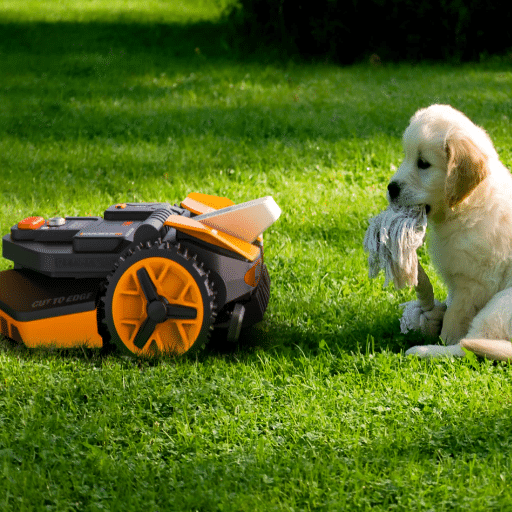
Most robot mowers require only a few simple steps before they are set up for use.
Unpack and Assemble: Remove the mower from its box and assemble the parts following the instruction manual, usually wheels and blades, if necessary.
Lay Boundary Wire: Set the boundary wire within your lawn perimeter and around the obstacles defining the mowing area. Prick it into the ground with pegs or stakes.
Plant the Charging Station: Put the charging station on an even surface within the boundary. Ensure it’s near a power outlet and that your mower can dock fairly easily for charging.
Program the Mower: The mower’s control panel or a companion app allows you to set schedules, cutting heights, and area preferences.
Do a Test Run: Switch on the mower and observe its first operation to confirm that it respects the boundary wire correctly and behaves as expected.
Following these steps will guarantee that your robot mower is in complete working condition and will easily maintain your lawn.
What is involved in the initial setup?
The preconditioning of a lawn robot is an arduous yet not-so-complicated procedure that will assure smooth functioning. First, select the lawn area and lay the boundary wire around its perimeter. This wire acts like a virtual fence; the mower senses it and goes away if it tries to exit outside the area. Now, some models can also accept wireless boundaries, so it’s just a matter of easier installation.
Preparing and installing the charging station on flat ground for terminating into a power outlet; the charging station and location should be under shade so that the mower does not heat up during charging. Ensure that no obstruction lies on the path for the docking or undocking of a mower.
After the boundary wire is laid and the charging station is installed, connect the wires to the charging station and switch it on. Sometimes, even your robotic lawn mower needs calibration to help correctly identify the charging station’s boundary to avoid obstacles while functioning.
After installing all components, the mower must be programmed using its onboard control panel or a mobile app. Configure the settings so that mowing can proceed according to schedule, adjusting for cutting height and area preferences concerning the particulars of your lawn. Some newer robotic mowers include rain sensors or GPS-assisted navigation, allowing for better functioning as conditions change.
Lastly, a test will be conducted to confirm if all components are doing their job as required. During this test, ensure the mower can maneuver within the boundary, returning to the charging station when necessary. Setting-up times may vary, but most users can complete the process within 2 to 4 hours, depending on the lawn’s complexity and familiarity with the setup.
Remember, following this procedure will make your robotic lawn mower more efficient over time, and your lawn will stay immaculate all season.
How do you install a perimeter wire?
Installing a perimeter wire for your robotic lawn mower consists of the following steps:
Layout Design: To start, create a map of your lawn boundaries, including obstacles like flower beds and trees, to understand where the wire should be run. Avoid sharp corners, as the mower will not travel smoothly in these.
Position the charging station: Install it in a central location where you can find a power outlet. Make sure it lies inside the perimeter and is free from obstructions.
Laying the wire: Beginning from the charging station, run the wire along the boundaries as per the plan. Secure it using the pegs or stakes supplied with your mower or bought separately. Keep the wires flush with the ground to avoid tripping or potential damage from lawn equipment.
Mark obstacles: Loop around obstacles with wire, leaving a safe distance as suggested by the manufacturer’s instructions; this will keep the mower away from these areas.
Connect and Test: After the wiring is completed, connect the mower to the charging station and test it. If the mower does not detect a boundary correctly, make necessary adjustments.
Burying the wire: For a more polished look, bury the wire slightly so that the mower can still detect it.
Taking the necessary time to install the perimeter wire properly will ensure that the robotic mower works efficiently and avoids undesired areas.
How to configure the mowing schedule?
Opening the robotic mower’s control panel or companion app allows me to set up the mowing schedule. I choose the days and times the mower operates according to lawn care requirements and local noise restrictions. Then, I configure the intervals according to the grass growth rate, adjusting them occasionally throughout the season to maintain the perfect look of my lawn.
Can a Robot Lawn Mower Handle All Types of Lawns?

Robot lawn mowers can handle many types of lawns, but they are unsuitable for all. Their prime charm is service to moderately flat terrain, which implies an upright obstacle, more straightforward varieties of grass, and concrete boundaries. While uneven terrain, steep slopes, or being densely wooded may disallow many models, extensive lawns may disallow them outright with the aforementioned type of mower. For best results, choose a robot lawn mower tailored toward the kind of lawn and its characteristics, such as size and features.
How does it manage slopes and uneven terrain?
Modern robot lawn mowers are equipped with modern technologies to tackle slopes and uneven, choppy terrains. Depending on the mower, many are fitted with stronger motors and high-traction wheels to operate on inclinations from 25% to 45%. Then, you have the highest-end sorts of mowers adept at dealing with a slope as steep as 70% with their particular design and features.
Mowers usually have tilt and gyroscopic sensors that adjust the mower’s movement and cutting mechanism accordingly to stay balanced with elevation changes. At the same time, floating cutting decks are generally preferred for uneven terrain, allowing an even cut by conforming to the ground’s configuration.
Depending on the location, some mowers also have adaptive safety features such as auto-stop to prevent tipping or stalling on steep or tricky bits of land!
Manufacturers usually recommend clearing your terrain of significant obstacles and using models whose slope rating corresponds to your property’s slope grade. With this progress, robot lawn mowers have strived to cope with challenging environments and provide the final touch to a neat lawn.
What happens if the mower gets stuck?
If a robot mower becomes stuck, most modern models tend to be equipped with sensors and alert systems to resolve the issue. The sensors recognize the obstacles or irregularities of the terrain that obstruct the mower’s movements. They force the mower to stop and send an alert to the owner’s device, a smartphone or a tablet. For instance, many premium models with GPS tracking and mapping capabilities allow users to further locate the mower in real time and study the problem at a distance.
They say obstacles such as tree roots, big rocks, or untamed plots are the number one cause of mowers getting stuck. To reduce this, some more advanced robotic mowers have built-in auto-reverse functions and all-terrain tires that assist in their tracking over irregular ground. Also, regular maintenance, including clearing the terrain of litter and inspecting the blades and wheels, can do a good deal to curtail interruptions. By mixing modern technology with good yard preparation, robotic mowers can tackle almost everything and reduce manual intervention.
Are they suitable for larger lawns?
Robot mowers have seen substantial height and advancement in their capacity to handle large lawns with the improvement in battery technology, the mapping system, and the efficiency of the cut. Many models exist with varying capacities, from 0.5 acres to beyond 5 acres; thus, the capacity largely depends on the model type. High-end robotic mowers have GPS-assisted navigation and intelligent mapping systems to work efficiently with minimal overlap on vast areas quickly. Long battery life and self-recharging promote long-term, uninterrupted operations for large areas. Some models can work up to 3 to 5 hours on a single charge and resume mowing automatically once recharged.
With features such as adjustable cutting heights, expansive cutting decks, and weather resistance, the suitability of these mowers for large lawns is further enhanced. To illustrate, some advanced mowers can deal with slopes as steep as 45% and adjust to varying grass conditions, thus giving even cuts despite the different terrains. A large property can benefit from multi-zone programming, too, which lets the mower work on parts of the lawn independently. Robotic mowers allow the owners to rely on them when serviced and adequately set up: an effective solution for comparatively big lawns.
Reference Sources
Smart Hybrid Fully Automatic Solar Grass Cutter
Optimal Path Planning for Robotic Lawn Mowers
Mechanism for Autonomous Mowing Robots for Long Grass
Frequently Asked Questions (FAQs)
Q: What should I consider when choosing the best robot lawn mower in 2025?
A: When selecting the best robot lawn mower, consider factors such as cutting performance, GPS mapping capabilities, the need for physical boundary wires, and whether it can handle slopes. Features like anti-theft protection and ease of use are also important, as is the mower’s ability to mow my lawn efficiently.
Q: How do new robot mowers like Navimow differ from traditional push mowers?
A: New robot mowers such as Navimow use GPS signals and lidar for mapping, eliminating the need for physical boundary wires typical of push mowers. They require less manual labor and can cut the grass more precisely over the entire lawn, offering a more beautiful lawn with less effort.
Q: Can a robot lawn mower handle a large yard?
A: Many modern robot lawn mowers are designed for large yards. Models like the Husqvarna Automower 435X AWD and the Mammotion Luba 2 AWD are equipped with all-wheel drive to handle slopes and navigate the boundaries of your yard effectively.
Q: What role does cutting performance play in choosing the best robotic lawn mower?
A: Cutting performance is crucial as it determines how well the robot mower can mow the lawn, handle different grass types, and manage grass clippings. A mower with superior cutting performance will ensure a neat and beautiful lawn.
Q: Are there any robot lawn mowers that don’t need physical boundary wires?
A: Yes, some advanced models, like Navimow and other new robot mowers, utilize GPS mapping and lidar technology. This eliminates the need for physical boundary wires and makes setup easier and more flexible across different yard layouts.
Q: How do robot lawn mowers compare to robot vacuums regarding technology?
A: Both robot lawn mowers and robot vacuums use advanced mapping technologies such as lidar and GPS. However, lawn mowers are designed to handle outdoor environments and navigate larger, more complex spaces like lawns, whereas vacuums focus on indoor cleaning.
Q: Can the cutting height be adjusted on robot lawn mowers?
A: Most robot lawn mowers allow you to adjust the cutting height according to your preferences or the season. This flexibility helps maintain a healthy and aesthetically pleasing lawn throughout the year.
Q: What anti-theft features do modern robot lawn mowers include?
A: Modern robot lawn mowers often have anti-theft features such as GPS tracking, alarms, and PIN code locks to ensure their security around your property.
Q: How does a mower’s deck affect its performance?
A: The mower deck size and design influence the cutting width and efficiency. A well-designed mower deck allows the mower to quickly cover more ground and manage grass clippings better, improving overall cutting performance and keeping the lawn neat.



